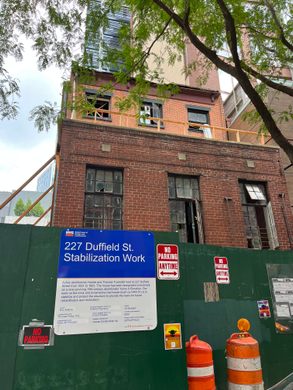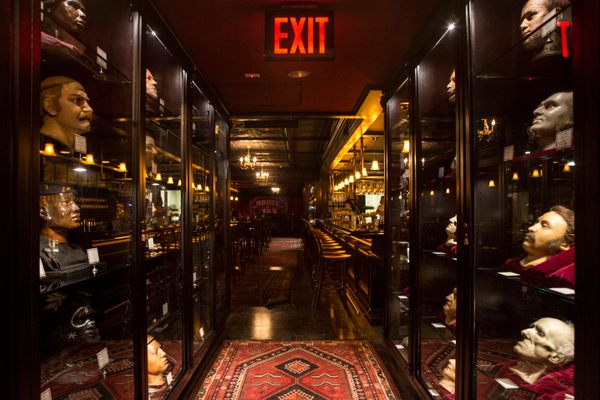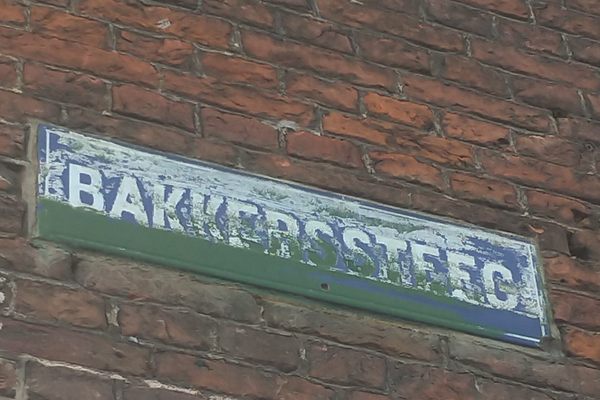Abolitionist Place
This block in downtown Brooklyn was a hotbed of antislavery activism along the Underground Railroad.
The block of Duffield Street between Fulton and Willoughby Streets is unremarkable at first glance. It seems no more noteworthy than any other strip of hotels, sneaker boutiques, and discount factory stores that populate downtown Brooklyn’s bustling Fulton Mall district. But in 2007, the city co-named this particular block Abolitionist Place, honoring the coalition of antislavery activists who used the area to ferry enslaved people along the Underground Railroad in the 1800s.
Not many of the original structures from that time period still stand on the street today, but interested passersby can still view the sturdy, two-story redbrick building at 227 Duffield that was once the home of celebrated abolitionists Thomas and Harriet Truesdell. The home was likely built in the 1840s and the Truesdells purchased it in 1850, the same year the Fugitive Slave Act was passed. Many of the Truesdells’ neighbors were also prominent abolitionists, including Underground Railroad conductor William Harned, who lived just down the street at 123 Duffield.
Historians and preservationists agree that this area of downtown Brooklyn was indeed a hotbed of antislavery activism, though the extent to which Duffield Street itself was a stop on the Underground Railroad was disputed in 2007, when the city attempted to seize several properties on the block to develop two hotels, a parking garage, and a park. Following a lawsuit brought by property owners and community members, the city agreed to reverse its eminent domain claim and pledged to leave the properties alone. The secondary street name was given as further acknowledgement of the area’s safe houses, churches, and Underground Railroad stations that sheltered people escaping slavery.
While 227 Duffield is currently not open to the public, its owner hosted a 2016 fundraiser to continue the work of turning the premises into a museum and heritage center. Old maps and property records indicate that there are underground tunnels connecting the mid-19th century homes of Duffield Street, leaving local history buffs anticipating the chance to someday explore the secrets within.
Community Contributors
Added by
Edited by
Plan Your Trip
The Atlas Obscura Podcast is Back!
























Follow us on Twitter to get the latest on the world's hidden wonders.
Like us on Facebook to get the latest on the world's hidden wonders.
Follow us on Twitter Like us on Facebook